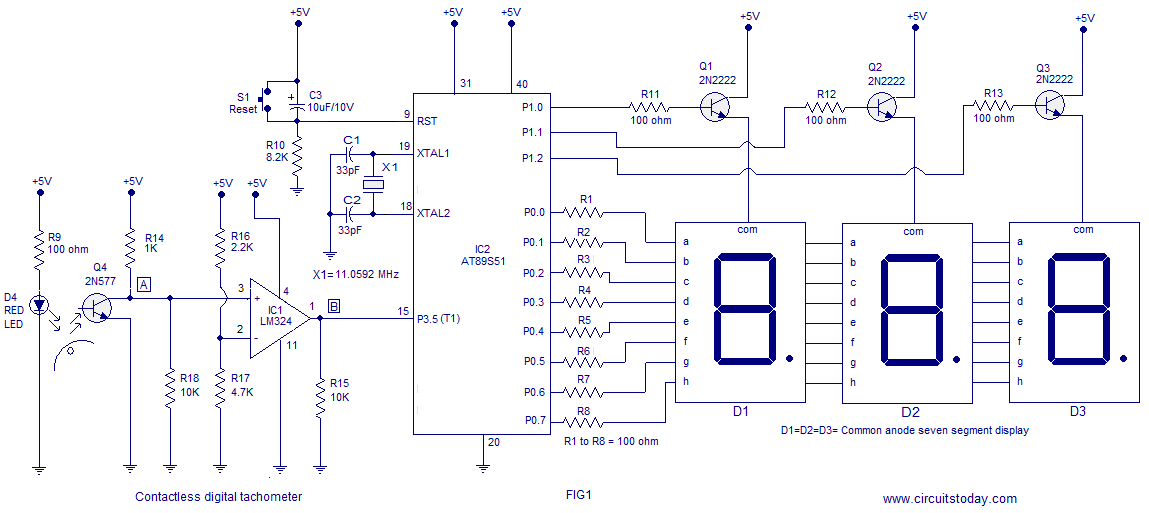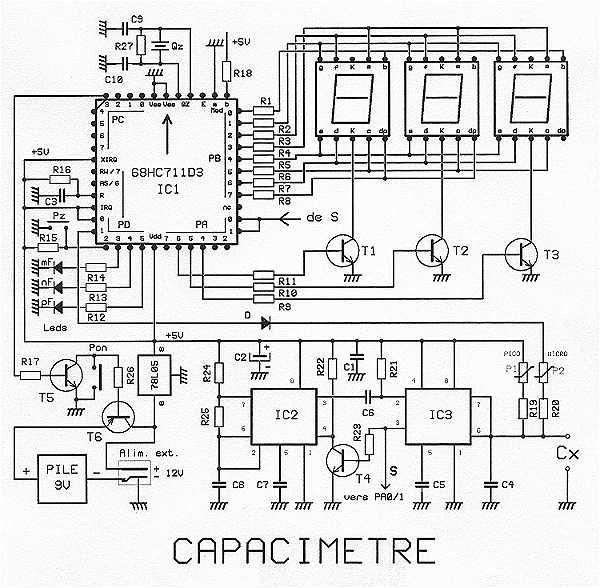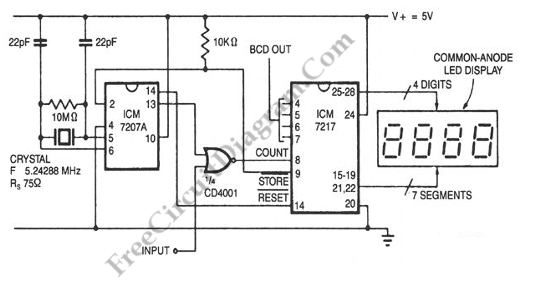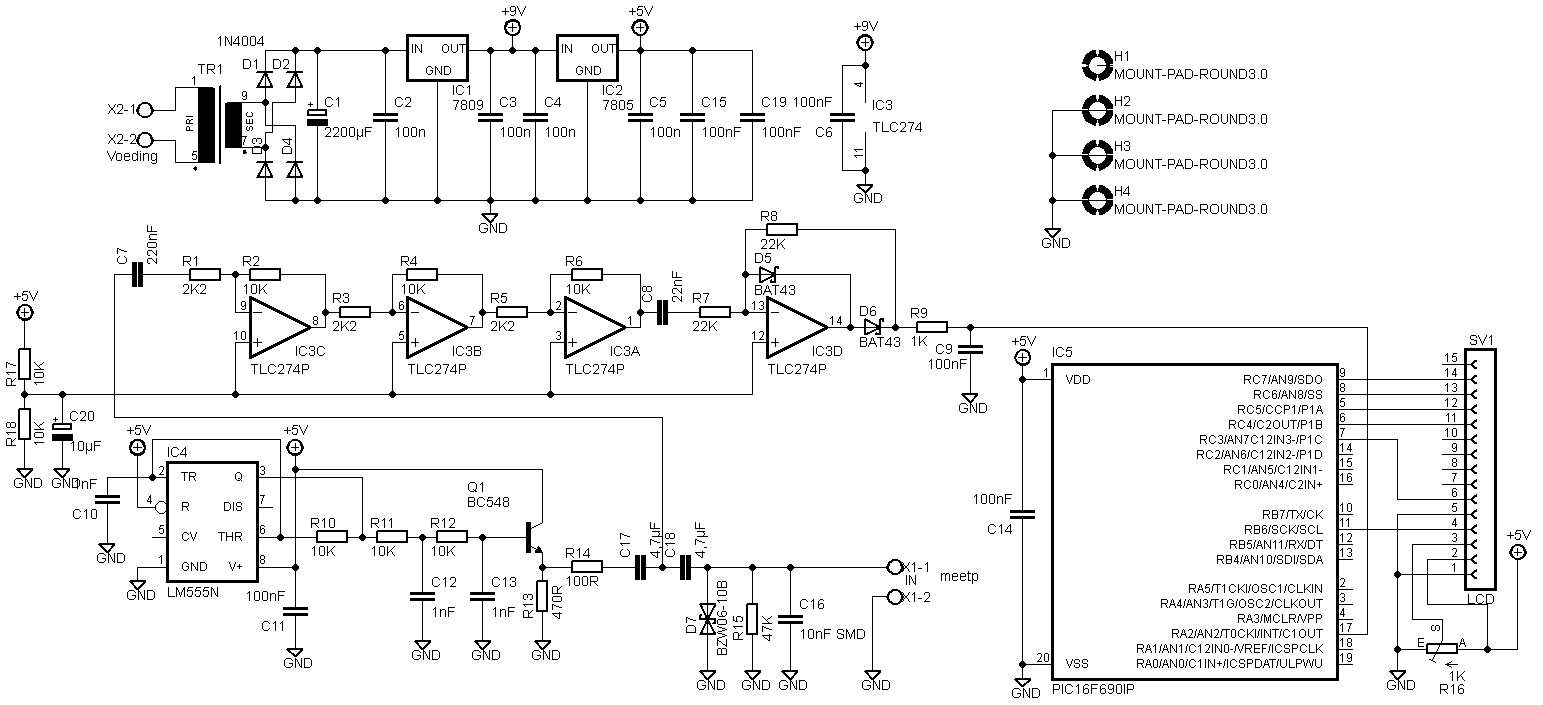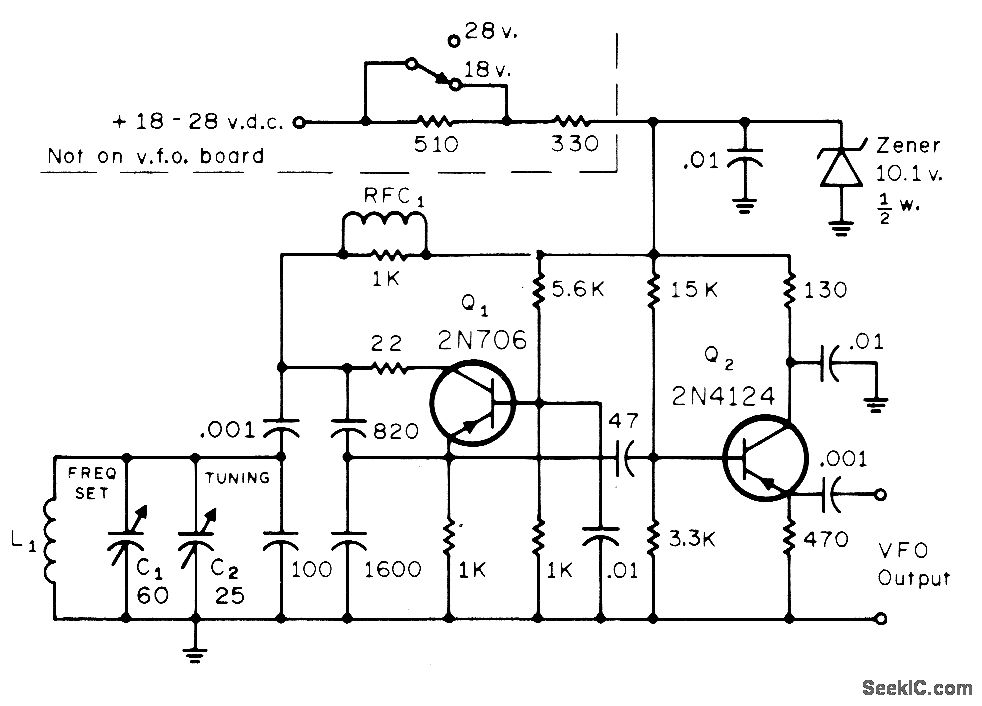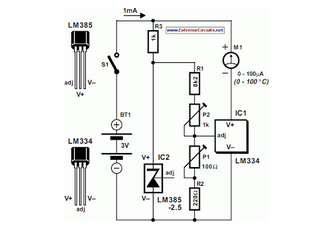
Sensitive Swr Meter
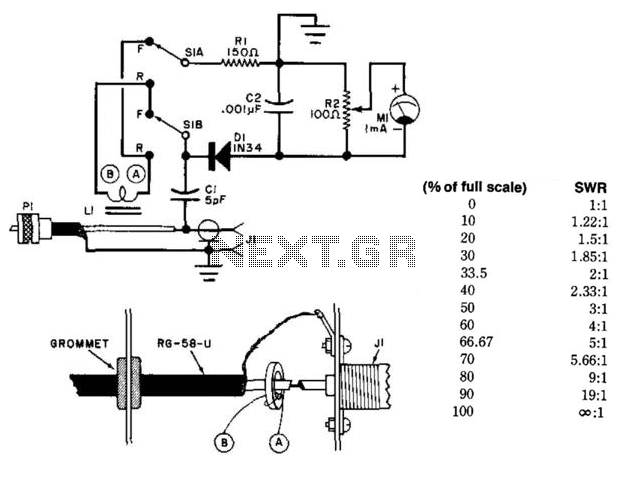
This circuit utilizes a toroidal pickup coil encircling the center conductor of a coaxial cable to measure the SWR (Standing Wave Ratio) of an antenna. The inductor (LI) consists of two turns of #26 enameled wire wound on a Fair-Rite 5963000301 toroidal core.
The circuit is designed to provide an efficient means of measuring the SWR, which is crucial for optimizing antenna performance. The toroidal pickup coil is strategically placed around the center conductor of the coaxial cable, allowing it to effectively couple with the electromagnetic fields generated by the RF signals traveling through the cable.
The choice of a Fair-Rite 5963000301 toroidal core is significant due to its high permeability and low core loss, which enhances the sensitivity and accuracy of the measurements. The use of #26 enameled wire for the winding ensures that the coil has a suitable inductance value while maintaining a compact form factor.
In operation, the circuit senses the voltage standing wave ratio by detecting the forward and reflected power in the coaxial cable. The output from the toroidal coil can be fed into a suitable measurement device, such as a microcontroller or an analog meter, to display the SWR value. This information is vital for tuning the antenna system, as a high SWR indicates poor matching between the antenna and the transmission line, which can lead to signal loss and potential damage to the transmitter.
Overall, this circuit configuration is a practical solution for antenna tuning and performance assessment, leveraging the advantages of a toroidal inductor and the inherent properties of coaxial transmission lines. Using a toroidal pickup coil around the center conductor of a coaxial cable, this circuit can be used to measure the SW R of an antenna. LI is two turns #26 enamelled wire on a Fair-Rite 5963000301 toroidal core. 🔗 External reference
The circuit is designed to provide an efficient means of measuring the SWR, which is crucial for optimizing antenna performance. The toroidal pickup coil is strategically placed around the center conductor of the coaxial cable, allowing it to effectively couple with the electromagnetic fields generated by the RF signals traveling through the cable.
The choice of a Fair-Rite 5963000301 toroidal core is significant due to its high permeability and low core loss, which enhances the sensitivity and accuracy of the measurements. The use of #26 enameled wire for the winding ensures that the coil has a suitable inductance value while maintaining a compact form factor.
In operation, the circuit senses the voltage standing wave ratio by detecting the forward and reflected power in the coaxial cable. The output from the toroidal coil can be fed into a suitable measurement device, such as a microcontroller or an analog meter, to display the SWR value. This information is vital for tuning the antenna system, as a high SWR indicates poor matching between the antenna and the transmission line, which can lead to signal loss and potential damage to the transmitter.
Overall, this circuit configuration is a practical solution for antenna tuning and performance assessment, leveraging the advantages of a toroidal inductor and the inherent properties of coaxial transmission lines. Using a toroidal pickup coil around the center conductor of a coaxial cable, this circuit can be used to measure the SW R of an antenna. LI is two turns #26 enamelled wire on a Fair-Rite 5963000301 toroidal core. 🔗 External reference
Warning: include(partials/cookie-banner.php): Failed to open stream: Permission denied in /var/www/html/nextgr/view-circuit.php on line 713
Warning: include(): Failed opening 'partials/cookie-banner.php' for inclusion (include_path='.:/usr/share/php') in /var/www/html/nextgr/view-circuit.php on line 713
